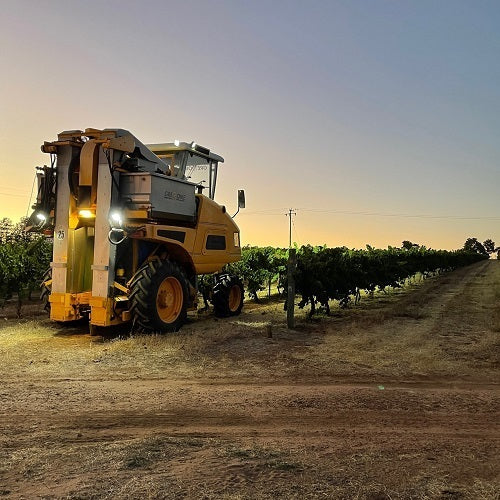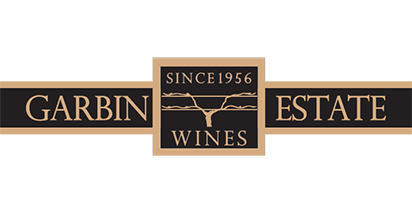
Vintage Report 2022
Share
Garbin Estate Wines Vintage Report of 2022.
Vintage started on the 22nd January this year, 6 days later than last year. Remember the end of the 2021 vintage report? Well winter rain exceeded the July average and turned into the wettest July in decades (26 years). A good start to the new season but that’s only the first chapter in the story.
Annual rainfall was above average across Greater Perth due to a very wet July and October, with annual rainfall totals mostly in 800-900mm range, to 1000 – 1300 mm in the Perth hills. July was the second wettest on record with 271.4mm, October was also very wet recording the wettest since 1965 with 122.8mm. It was around this time I thought if the rain stops and we don’t get any showers during vintage we could be in for a great harvest, well it stopped raining alright but with it came an extreme heat wave. Perth Metro recorded 5 days in total with maximum temperatures of 40 degrees or higher in December, which was the highest count in any month in Perth official records. Perth also recorded its third-highest temperature on Christmas day (42.8 degrees) and second-highest temperature on the 26th (43.5 degrees) for December in the records since commencing in 1897.
Pruning began in early July for the newest “block” vineyard the Waldron Shiraz and was pruned by Peter Garbin himself to make sure the job was done correctly. With a newly established vineyard it’s important to have the training method setup properly so it’s easy to follow the same pattern in the years to follow, the most common method used in our vineyards are double cordon, spur pruned. The Swan Valley and Gingin estates followed in mid July being more to schedule with previous years.
Spring was wet and mild with above average rainfall, and the wettest spring in the Perth Metro, mostly due to the record wet October. Bud burst to flowering of the vines were generally unaffected by the conditions with no signs of disease.
Summer 2021-22 was the hottest on record across Perth. The average max temperature in Perth was one degree higher than the previous record and rainfall was 5.2mm total, lowest summer rain since 2013-14(2mm). It’s safe to say for our conditions and growing style, irrigation is important through the summer months. It was not ideal to find before vintage the Gingin vineyard receiving suboptimal water to the top half of the block, this is when vintage truly started for Garbin Wines.
Just before Christmas, when the temperature was starting to ramp up, Peter had to deal with irrigation issues. At the Gingin vineyard a 4 inch pipe split underground and another half way up the vineyard. With nobody able to help rectify the issue so close to Christmas, Peter was guided with instructions by an irrigation company to fix the problem and fortunately we were able to return sufficient water to the whole vineyard. Not only a good winemaker but an underground plumber too!
Vintage started on the 22nd of January reaching 42 degrees that day, first off the vine was Verdelho. The plan was to arrive at Gingin in the afternoon the day before but there was a power outage so we left later in the evening when power returned. The pick was at a cool 4am the next morning with the machine harvester, all went well with good fruit quality and total yield higher than last year.
Chardonnay from Gingin was next on the 26th of January, this was harvested from the “Young Block” and picked early to be made into sparkling base wine. After the Chardonnay, for the first time 2 red varieties were picked and crushed between the whites to make sparkling wines. These two reds were the Merlot and Shiraz picked on the 29th and 30th of January from the Swan Valley estate vineyard. We have never processed red grapes in the middle of white wine production but this was necessary for higher acid content in the sparkling base wines.
It’s about now I should mention a new piece of equipment bought to help make our lives and vintage easier. This year Peter ordered a custom built forklift tipper. It serves two purposes, to tip the fruit into the crusher, and after pressing, tip the bin filled with grape skins (marc) out to be used as fertilizer. This was a big step up for Garbin Wines, with the old method a semi automatic tipper was used and needed plastic bin lining to make sure the fruit tipped into the crusher and not spill onto the floor, now this step has been eliminated. Regarding the leftover grape pressings, this used to be hand shovelled into a pile, now we can drive up and dump them all at once, the family are all very thankful for this upgrade, anything that saves time and extra labour is much appreciated.
Semillon was next from Gingin on the 2nd of February. This variety has a delicate thin grape skin that easily juices if not harvested with care, it’s important to reduce the beater settings on the harvester so the majority of fruit stays as fresh as possible for extraction back at the winery. The total yield was up from last year. Chenin Blanc from the Swan Valley came after on the 6th of February, the total yield was on average with good quality fruit and no disease.
Onto the reds now and by this time the vineyard fruit had seen a fair share of Perth sun and was ready to come off. The first variety was the “Old Block” Shiraz, 2 beaters broke on the harvester although luckily these parts are easily replaced with minimal down-time. This was because of the consistent heat this year. The vine fruit held less volume and required extra shaking effort by the harvester to drop the fruit. This seemed to be the experience by a few growers around the Swan District region. It was then after slowing the harvester ground speed and keeping the beater speed within a normal range, we were able to continue with no breakdowns for the rest of the season.
The Sangiovese was the next to come off and is also where we found an increase in burnt fruit. This is due to the variety having a lighter skinned berry and the intense heatwave. The Swan District region experienced a higher volume of fruit loss to sunburn this year. With increased warming of the region, more needs to be done in the vineyard to protect crops from intense sun exposure. In future, new methods to mitigate this issue will be trialled and reported back next year. Fruit selected observed good quality and full flavour.
Towards the back end of February no rain had disrupted vintage or delayed harvest. This also meant minimal to no disease present in vineyards due to the lack of rain and humidity. Katrina noted the fig tree on the home block was struggling to ripen, a first for many years, selecting to survive than ripen fruit in consistent 35 degree + temperatures, and fair enough too. It was also around this time when WA’s Covid cases started to rise above single digits.
Cabernet Sauvignon was next on the 2nd of March. Towards the top of the vineyard birds had taken fruit due to the late blossom. In surrounding gumtrees it was more apparent, however once the trees had blossomed birds left promptly in preference to the flowers. Total yield was up on the previous year.
Waldron Clone Shiraz was the last picked on the 15th of March, the youngest vineyard. Now in its second year of fruiting, this vineyard produced roughly 10 tonne over the 2 acres planted, known for its heavy crop and vigour we are excited to see this vineyard beginning to hit its strides with only more potential for quality as the years go on.
This vintage we walked away pleased with our efforts and excited to see how the wines are received in bottle very soon with others over the next few years. As I’m writing this, it’s a nice sunny 25 degrees and we’re enjoying a few cooler days in autumn just before Easter. Cheers!
